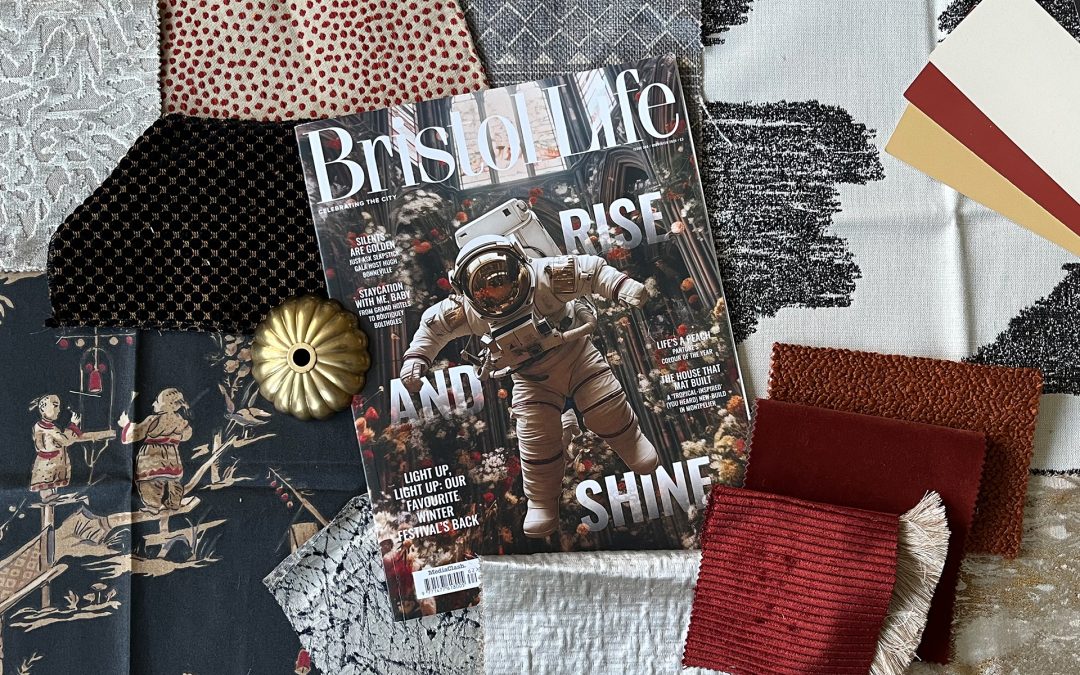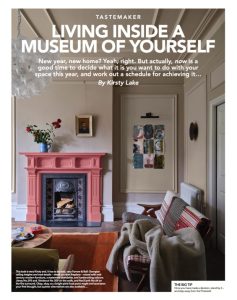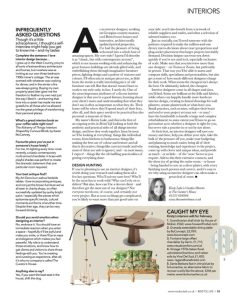As an interior designer, working on Georgian country manors, cool Bristol townhouses and innovative, architecturally updated period properties, I’ve had the pleasure of being welcomed into a whole host of amazing spaces. My core style? I guess I’d describe it as classic, but with contemporary accentswhich to me means working with and enhancing the great features buildings are already gifted with, and embellishing them through imaginative furniture pieces, lighting design and a palette of textures and colours. I’ll often mix in antique pieces too, as little beats the stories a really interesting piece of old furniture can tell. But that doesn’t mean I have to work to my style only; in fact, I rarely do. One of the most important attributes of an interior designer is that you’re a good listener, learning about your client’s tastes and understanding that what they don’t say is often as important as what they do. This will be where they’ll spend much of their lives, after all, and it needs to be practical but also personal: a museum of them.
My name’s Kirsty Lake, and this is the first of an ongoing series in Bristol Life looking at both the aesthetic and practical sides of all things interior design, and how they work together. Issue by issue we’ll be looking at everything: things like individual rooms, from kitchens to bathrooms; things like making the best use of colour and texture and all things decorative; things like current trends (and why most of them are safe to ignore); and most columns, I expect! the oft-baffling practicalities of getting everything done.
Design hunting
If you’re planning to use an interior designer, it’s worth doing your research and asking them all a few key questions. Who’ll suit my taste best? Who’ll be the most fun to work with? Who can I rely on to deliver? But also, how can I be a decent client and therefore get the most out of my designer? Not everyone needs one, of course, and certainly not every project. But as soon as things get complicated, you’re likely to want more than just good taste on your side: you’d also benefit from a network of reliable suppliers and trades, and often a selection of talented makers too.
Just as crucially, you’ll need someone with the patience required to make the million-and-one dreary micro-decisions about exact proportions and plug-socket placement that larger projects inevitably demand. Decision fatigue can wear you down quickly you if you’re not used to it, especially on homes of scale. Make sure that you interview more than one designer on Teams or Zoom, but preferably in person. That way you’ll be able to assess and compare skills, specialisms and personalities, but also get a sense of how much different designers charge for their work. What seems the cheapest isn’t always the best. (Or ultimately, indeed, the cheapest.)
Interior designers come in all shapes and sizes, you’ll find. Some are brilliant at the frills and fabrics, while others can happily handle more hardcore interior design, creating technical drawings for window architraves, ornate plasterwork or what-have-you. Small practices, such as mine, will give their heart and soul to your project yet may not or may! have the bandwidth to handle a large and complex refurbishment; to some extent you’ll have to go on gut instinct as to whether a designer is right for you, but never rule a practise in or out by size alone.
At their best, an interior designer will save you money and time, help you define your style, take the bulk of the pressure off you, make your budgeting and planning so much easier, bring all of their training, knowledge and experience to the project, come up with clever and unique ideas, and provide as much or as little of the wow’ factor as you require. Add to this their extensive contacts, and the sheer joy of getting the entire room or house being handed to you on a silver platter, with every finishing touch present and correct, and it’s easy to see why using an interior designer can often make a great deal of sense.
Infrequently asked questions
Though it’s a little schizophrenic, I thought a self-interview might help you get to know me and my tastes
Compete the sentence: I love interior design because.
I grew up in the West Country, privy to all sorts of extraordinary architecture and homes but nowhere was as inviting as our own three-bedroom 1900s miner’s cottage. The air was scented with whatever was cooking for dinner, and in the winter a fire was always going. Buying my own property years later gave me the freedom to feather my own nest just the way I liked it and turning that love into a career has made me ever-grateful to all those who’ve allowed me the great privilege of transforming their personal places.
What’s a great interiors book on your coffee table right now?
The Alchemy of Things: Interiors Shaped by Curious Minds, by Karen McCartney.
Favourite piece you’ve put in someone’s house lately?
For me, it’s lighting every time: most recently, a classic contemporary multi-armed chandelier in brass with playful shades was perfect to create the dramatic statement one room required.
Your best antique find?
My Art Deco burr walnut bedside tables. I love incorporating antiques, and not just the brown furniture we’ve all seen in charity shops, often successfully updated by quirky bright paint. I especially love pieces that epitomise the trends, culture and forms of another time. Despite their age, they can be very forward thinking.
Should you avoid emotion when designing an interior?
No, embrace it. You should have an immediate reaction when you enter a space hopefully it’ll be joyful and make you smile, or there’ll be an ease and elegance that makes you feel peaceful. My role is to understand those emotions, and know how to get clients and visitors to share those feelings with you. You’re creating and curating an experience; it’s why my company is called The Curator’s House.
Anything else to say?
Yes, if you want the best seat in the house, shift the dog.
The Big Tip
Once you have made a decision, stand by it and step away from the Pinterest!
Caught my eye
Kirsty’s interiors edit for February
1. Scandinavian shell chair by House of Mobel, £560; www.houseofmobel.com
2. Granada extendable dining table by BoConcept, £2,959; boconcept.com
3. Fontaine large offset chandelier by Aerin; £1,715; www.visualcomfort.com/uk
4. Vintage 1970s Italian floral upholstered bamboo and rattan sofa by Vivai Del Sud; £1,450; ragandbonebristol.com
5. Santa Barbara Ikat in china blue by Schumacher, an alternative fabric to recover a sofa like the above; £246 per metre; fschumacher.co.uk
Image Credits: See published article
Magazine Published by Media Clash, Bristol Life
https://issue.com/mediaclash/docs/brl346.final




